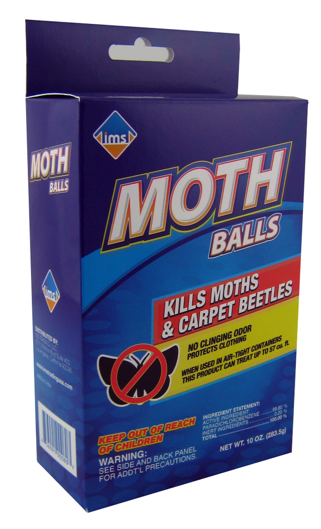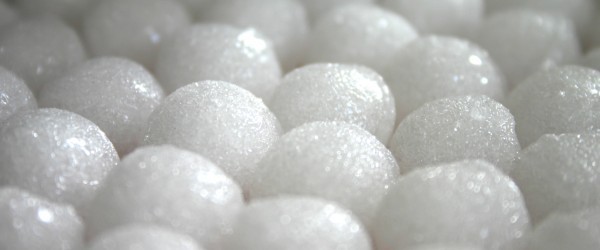
The MAS office will be closed for Christmas Holidays December 24th to January 4th.
Usual office hours will resume on January 5th, 2026

Mothballs are most commonly used to prevent insects, more specifically casemaking and webbing clothes moths, from eating animal-based textiles, such as wool and feathers. This is not to say that they won’t eat other materials, but this is the most common. In the past, many people used mothballs while their clothes were in storage and needed protection. It should be noted that mothballs are not a preservative and do not prevent textiles (or other objects) from deteriorating on their own. See the previous blog posts on the 10 Agents of Deterioration for information on how to prevent your museum collection from deteriorating.
Composed of either naphthalene or para-dicholorbenzene, mothballs deter and kill insects. Round and white (kind of looks like golf balls), the presence of mothballs is easily detected by their distinctive smell (camphor). This smell is a result of how mothballs operate. Through sublimation, the solid product is vapourized into the air at low temperatures, such as room temperature. Mothballs were originally meant to be used in contained spaces, but people have misused them placing them in open spaces, such as entire rooms, and can result in many problems. The problem lies in this, mothballs are poisonous.

If you can smell mothballs, you are inhaling them and exposing yourself to their harmful effects. Mothball exposure can result in dizziness, headaches, nausea, disorientation, and difficulty breathing. Once you have experienced this, you will not forget it (believe us!). If you have been exposed to mothballs via inhalation, Material Safety Data Sheets (MSDS) say that you should go to an uncontaminated area: go outside and breathe fresh air. Repeated and prolonged exposure could result in cataracts as wells a liver and kidney damage.
Do not allow children or animals to come into contact with mothballs or allow them to consume them (this should go without saying). If ingested, seek medical attention immediately!
If you have found mothballs, do not touch them with your bare hands: use gloves. Dispose of them in the same way that you dispose of other household hazardous waste. Ensure that you wash your hands afterwards as well.
If you do encounter an infestation in your collection, whether that is moths or other types, give us a call and we’ll help you remedy the situation. Please do not turn to mothballs.
References:
Beyond Pesticides (nd). Clearing the Air of Toxic Moth Repellents. Retrieved on August 25, 2014 from http://www.beyondpesticides.org/gateway/health%20effects/Mothballs.pdf
Child, Robert & Pinniger, David (2012). Carpet Beetles and Clothes Moths: What they are, what they eat and how to control them. Retrieved August 25, 2014 from http://www.buildingconservation.com/articles/carpet-beetles-clothes-moths/carpet-beetles-clothes-moths.htm
Florida Department of Agriculture and Consumer Services (nd). Facts About Mothballs. Retrieved on August 25, 2014 from http://www.freshfromflorida.com/content/download/33195/813755/Moth_balls_brochure_web.pdf
Gervais, J, Luukinen, B, Buhl, K, & Stone, D (2010). Naphthalene Technical Fact Sheet. Retrieved on August 25, 2014 from http://npic.orst.edu/factsheets/naphtech.html
Landi, Sheila (1992). The Textile Conservator’s Manual 2nd Ed. Oxford: Butterworth-Heinemann Ltd.
ChemADVISOR (2009). Material Safety Data Sheet: Naphthalene. Retrieved August 25, 2014 from https://www.mathesongas.com/pdfs/msds/MAT16120.pdf
Raphael, Toby (July 1994). Conserve-O-gram 3/6: An Insect Pest Control Procedure: The Freezing Process. Retrieved on August 25, 2014 from http://www.nps.gov/museum/publications/conserveogram/03-06.pdf
Stone, D. & Stock, T. (May 2008). Mothballs: Proper Use and Alternative Controls for Clothes Moths. Retrieved on August 25, 2014 from http://ir.library.oregonstate.edu/xmlui/bitstream/handle/1957/20800/pnw606-e.pdf?sequence=1
Strang, Thomas J.K (1997). CCI Note 3/3: Controlling Insect Pests with Low Temperature. Retrieved August 25, 2014 from http://www.cci-icc.gc.ca/resources-ressources/ccinotesicc/3-3-eng.aspx
Wilson, Colleen (December 17, 2010). Just Mothball It. Retrieved on August 25, 2014 from http://blog.royalbcmuseum.bc.ca/2010/12/just-mothball-it.html

Usual office hours will resume on January 5th, 2026

Just a reminder that the Final Report for the Museum Improvement Micro Grant for Community Museums is due December 5th! Your final report will require you to provide a brief

Thursday October 16, 202512:00pm CSTOnline via Zoom: https://us02web.zoom.us/j/86760471705?pwd=XjoSlWAP0TJZVYrprylmLqujOkVrk2.1 No registration required. The Museum Grant Program (MGP) provides operational funding to help foster strong, vibrant, community-based Saskatchewan museums that are valued